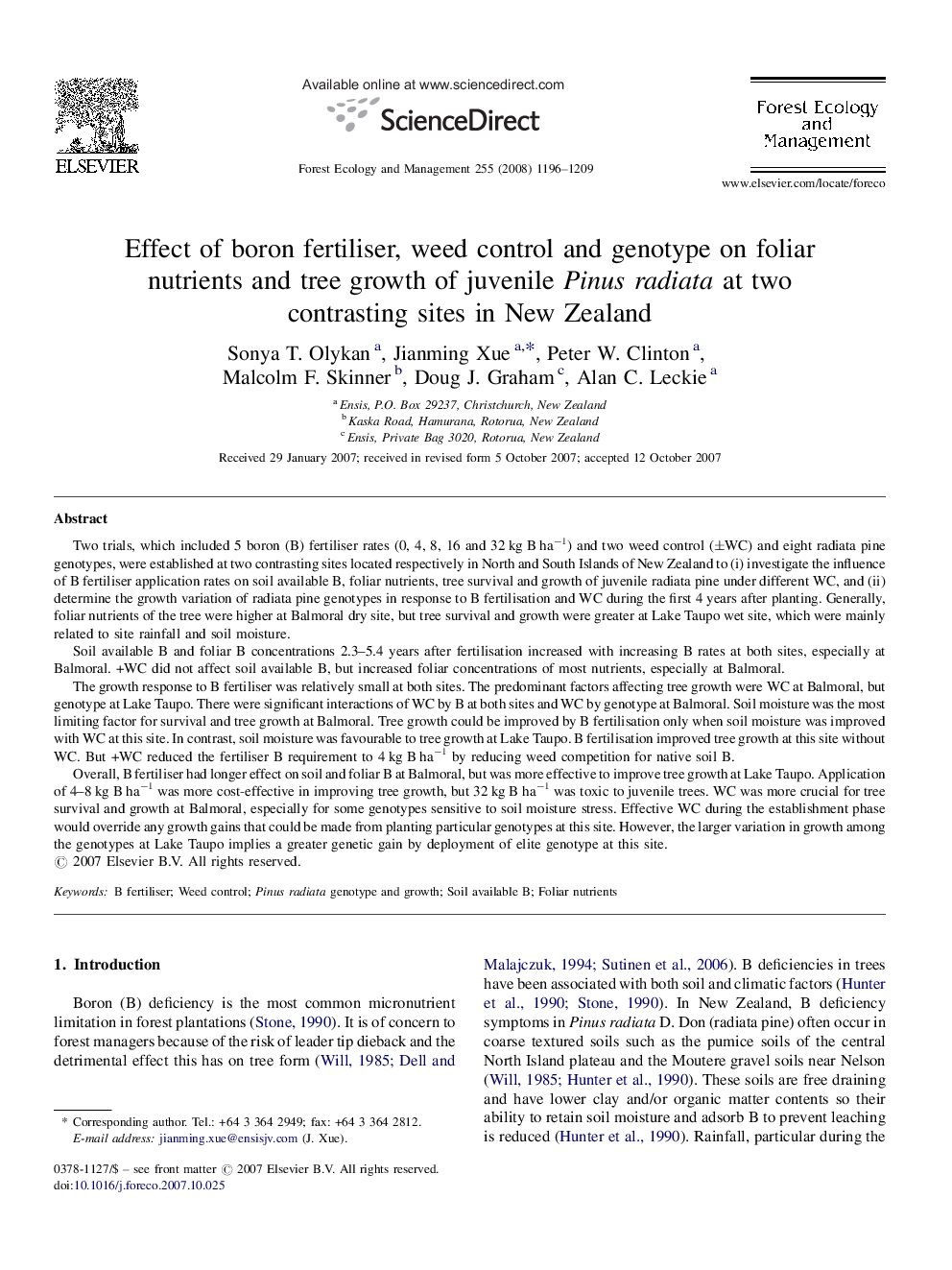| کد مقاله | کد نشریه | سال انتشار | مقاله انگلیسی | نسخه تمام متن |
|---|---|---|---|---|
| 89898 | 159358 | 2008 | 14 صفحه PDF | دانلود رایگان |

Two trials, which included 5 boron (B) fertiliser rates (0, 4, 8, 16 and 32 kg B ha−1) and two weed control (±WC) and eight radiata pine genotypes, were established at two contrasting sites located respectively in North and South Islands of New Zealand to (i) investigate the influence of B fertiliser application rates on soil available B, foliar nutrients, tree survival and growth of juvenile radiata pine under different WC, and (ii) determine the growth variation of radiata pine genotypes in response to B fertilisation and WC during the first 4 years after planting. Generally, foliar nutrients of the tree were higher at Balmoral dry site, but tree survival and growth were greater at Lake Taupo wet site, which were mainly related to site rainfall and soil moisture.Soil available B and foliar B concentrations 2.3–5.4 years after fertilisation increased with increasing B rates at both sites, especially at Balmoral. +WC did not affect soil available B, but increased foliar concentrations of most nutrients, especially at Balmoral.The growth response to B fertiliser was relatively small at both sites. The predominant factors affecting tree growth were WC at Balmoral, but genotype at Lake Taupo. There were significant interactions of WC by B at both sites and WC by genotype at Balmoral. Soil moisture was the most limiting factor for survival and tree growth at Balmoral. Tree growth could be improved by B fertilisation only when soil moisture was improved with WC at this site. In contrast, soil moisture was favourable to tree growth at Lake Taupo. B fertilisation improved tree growth at this site without WC. But +WC reduced the fertiliser B requirement to 4 kg B ha−1 by reducing weed competition for native soil B.Overall, B fertiliser had longer effect on soil and foliar B at Balmoral, but was more effective to improve tree growth at Lake Taupo. Application of 4–8 kg B ha−1 was more cost-effective in improving tree growth, but 32 kg B ha−1 was toxic to juvenile trees. WC was more crucial for tree survival and growth at Balmoral, especially for some genotypes sensitive to soil moisture stress. Effective WC during the establishment phase would override any growth gains that could be made from planting particular genotypes at this site. However, the larger variation in growth among the genotypes at Lake Taupo implies a greater genetic gain by deployment of elite genotype at this site.
Journal: Forest Ecology and Management - Volume 255, Issues 3–4, 20 March 2008, Pages 1196–1209